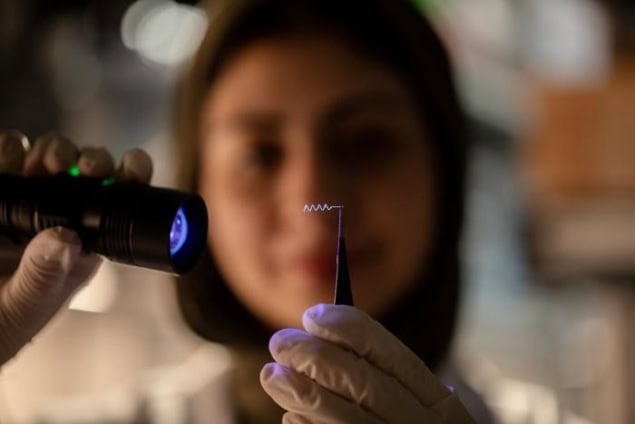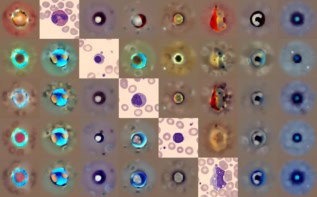
Researchers in the United Arab Emirates have designed a new catheter that can deliver drugs to entire regions of the brain. Developed by Batoul Khlaifat and colleagues at New York University Abu Dhabi, the catheter’s helical structure and multiple outflow ports could make it both safer and more effective for treating a wide range of neurological disorders.
Modern treatments for brain-related conditions including Parkinson’s disease, epilepsy, and tumours often involve implanting microfluidic catheters that deliver controlled doses of drug-infused fluids to highly localized regions of the brain. Today, these implants are made from highly flexible materials that closely mimic the soft tissue of the brain. This makes them far less invasive than previous designs.
However, there is still much room for improvement, as Khlaifat explains. “Catheter design and function have long been limited by the neuroinflammatory response after implantation, as well as the unequal drug distribution across the catheter’s outlets,” she says.
A key challenge with this approach is that each of the brain’s distinct regions has highly irregular shapes, which makes it incredibly difficult to target via single drug doses. Instead, doses must be delivered either through repeated insertions from a single port at the end of a catheter, or through single insertions across multiple co-implanted catheters. Either way, the approach is highly invasive, and runs the risk of further trauma to the brain.
Multiple ports
In their study, Khlaifat’s team explored how many of these problems stem from existing catheter designs. They tend to be simple tubes with single input and output ports at either end. Using fluid dynamics simulations, they started by investigating how drug outflow would change when multiple output ports are positioned along the length of the catheter.
To ensure this outflow is delivered evenly, they carefully adjusted the diameter of each port to account for the change in fluid pressure along the catheter’s length – so that four evenly spaced ports could each deliver roughly one quarter of the total flow. Building on this innovation, the researchers then explored how the shape of the catheter itself could be adjusted to optimize delivery even further.
“We varied the catheter design from a straight catheter to a helix of the same small diameter, allowing for a larger area of drug distribution in the target implantation region with minimal invasiveness,” explains team member Khalil Ramadi. “This helical shape also allows us to resist buckling on insertion, which is a major problem for miniaturized straight catheters.”
Helical catheter
Based on their simulations, the team fabricated a helical catheter the call Strategic Precision Infusion for Regional Administration of Liquid, or SPIRAL. In their first set of experiments, they tested their simulations in controlled lab conditions. They verified their prediction of even outflow rates across the catheter’s outlets.

Variable-stiffness catheter could increase the safety of robotic eye surgery
“Our helical device was also tested in mouse models alongside its straight counterpart to study its neuroinflammatory response,” Khlaifat says. “There were no significant differences between the two designs.”
Having validated the safety of their approach, the researchers are now hopeful that SPIRAL could pave the way for new and improved methods for targeted drug delivery within the brain. With the ability to target entire regions of the brain with smaller, more controlled doses, this future generation of implanted catheters could ultimately prove to be both safer and more effective than existing designs.
“These catheters could be optimized for each patient through our computational framework to ensure only regions that require dosing are exposed to therapy, all through a single insertion point in the skull,” describes team member Mahmoud Elbeh. “This tailored approach could improve therapies for brain disorders such as epilepsy and glioblastomas.”
The research is described in the Journal of Neural Engineering.



